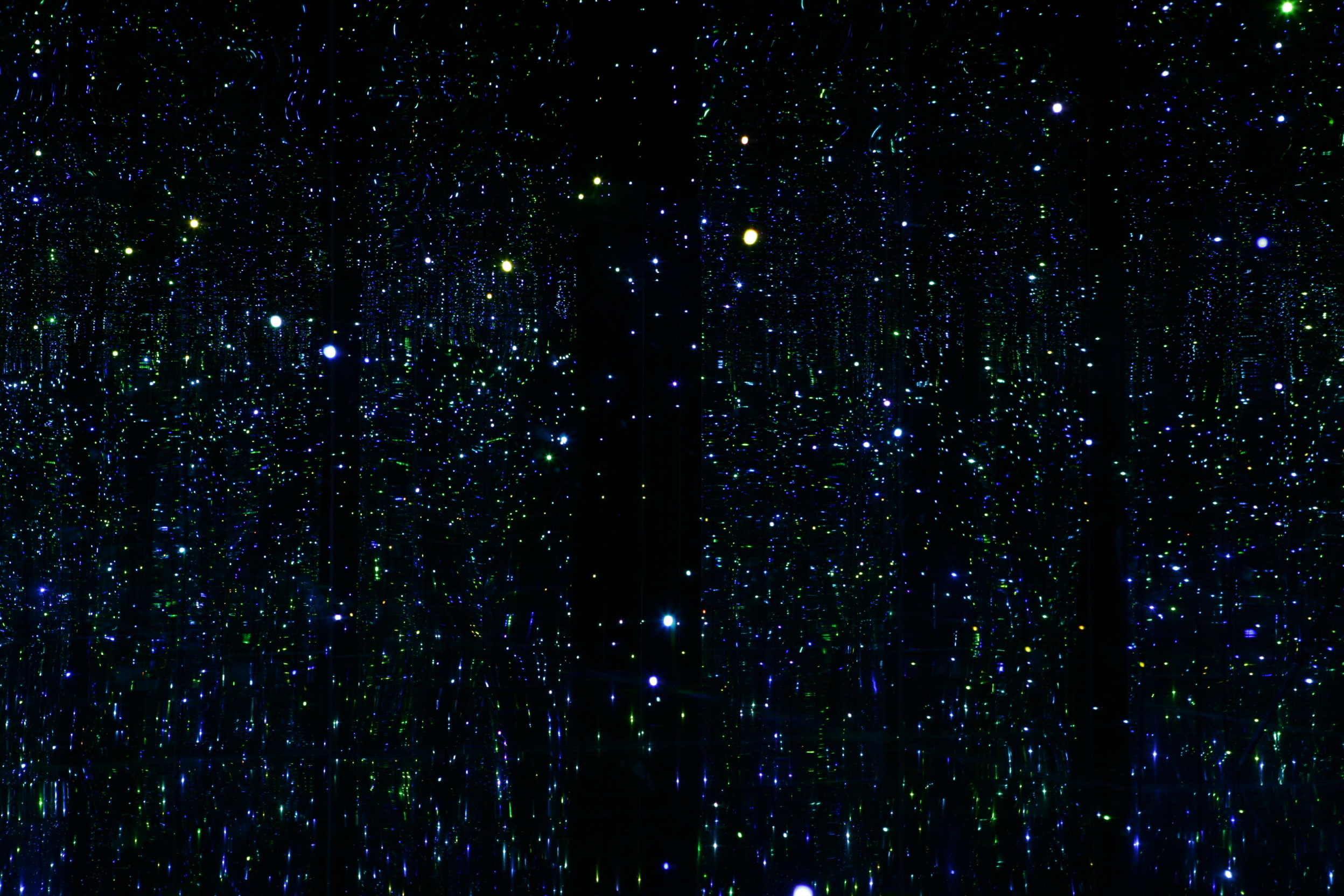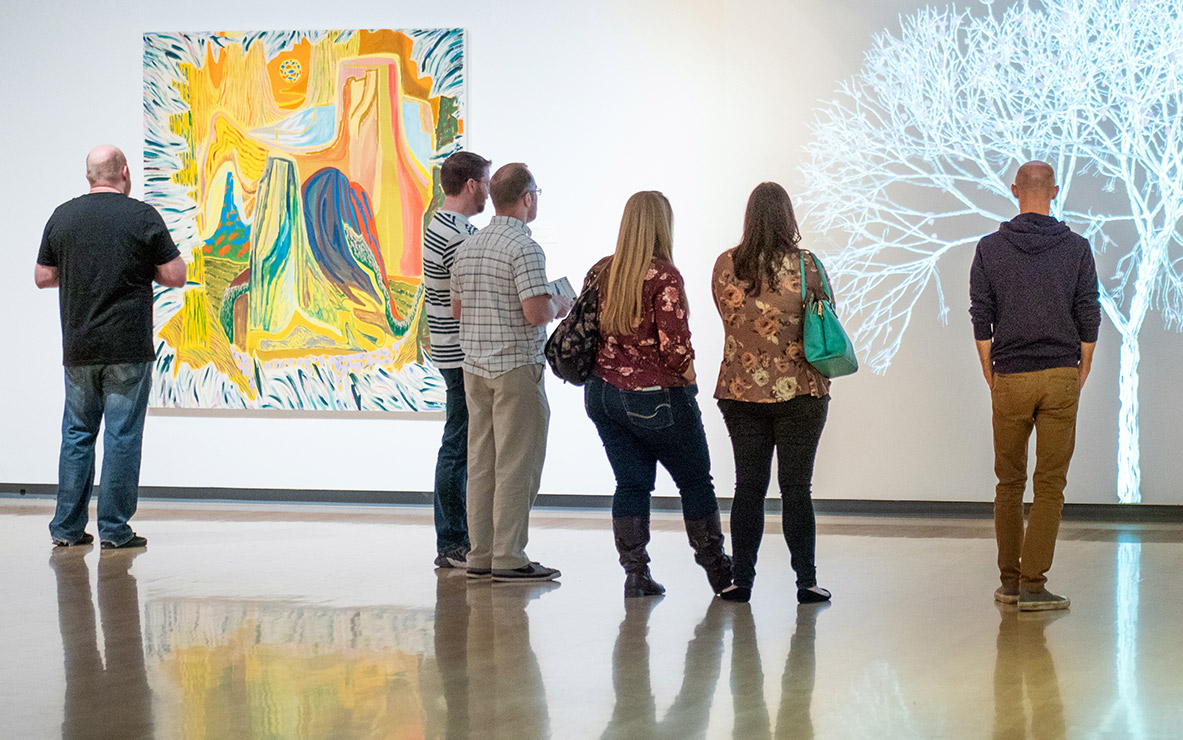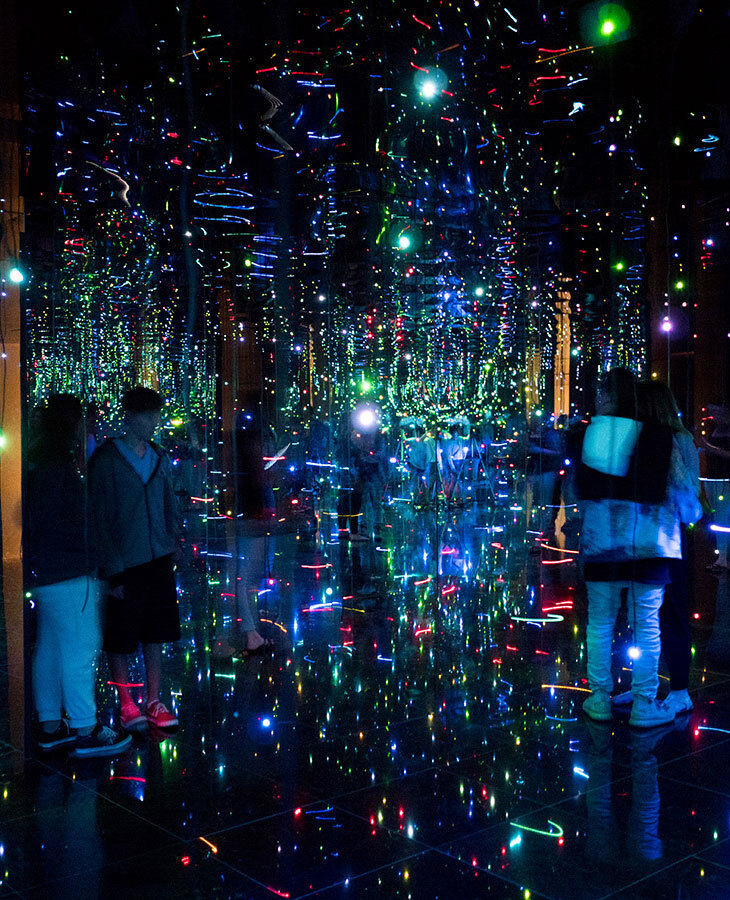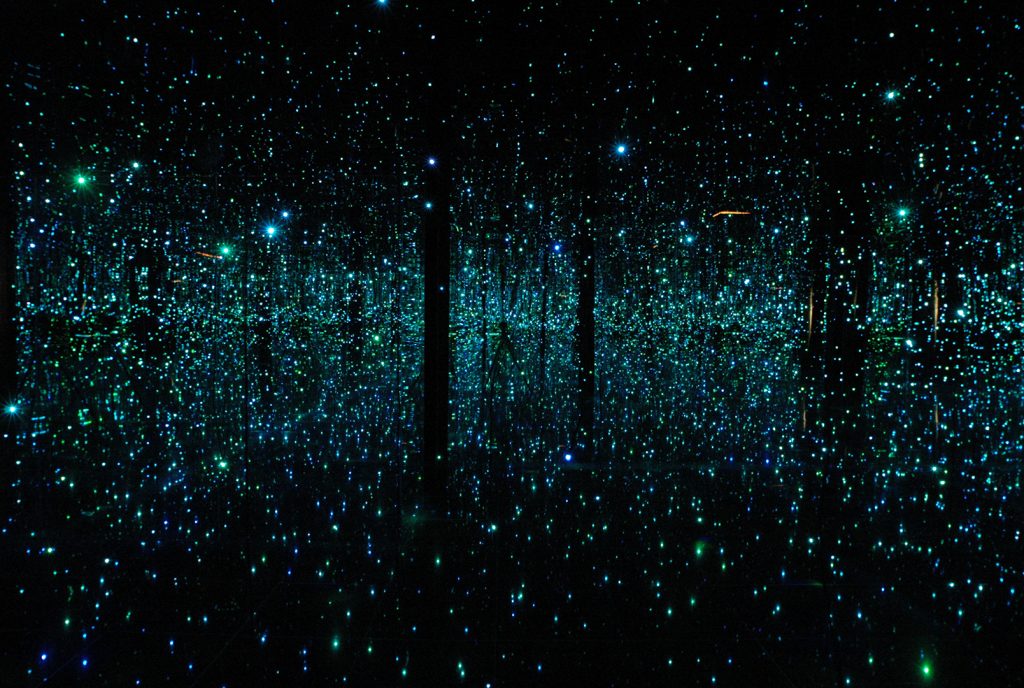
ABOUT THIS EXHIBIT
The piece is a dark room lined with mirrors on every surface and strands of looping LED lighting suspended from the ceiling. This deceptively small room feels as if it’s a vast, infinite galaxy of lighting and allows the viewer to enter and be surrounded, or obliterated by Kusama’s fireflies.
Yayoi Kusama’s Infinity Mirror Room explores the psychedelic sensations of the ‘self’ and the artist’s ongoing hallucinations that started when she was a child. In this work, Kusama’s repetitive and extensive use of polka dots, mirrors, and LED lights explores infinite repetition and encourages you to ‘obliterate’ your personality and become one with eternity.
IMAGE CREDIT
Yayoi Kusama, You Who are Getting Obliterated in the Dancing Swarm of Fireflies, 2005. Mixed media installation with LED lights. Collection of Phoenix Art Museum, Museum purchase with funds provided by Jan and Howard Hendler.
ABOUT THIS EXHIBIT
A pioneer of perceptual experiences, Kusama expresses a complex balance between her psychological obsessions and her aesthetic control over them. In the late 1950s, she left Japan for New York City. Her work spans paintings, performances, installations, sculptures, films, fashion, and literary works. They transcended the Pop and Minimalist movements of the twentieth century and reflect the mind-altering spirituality of hippie culture.
Yayoi Kusama: You Who Are Getting Obliterated in the Dancing Swarm of Fireflies is made possible through the generosity of donors to the Museum’s annual fund.

Featuring more than 20,000 objects, the collection spans the globe, bringing the world to our city, and our city to the world.

Discover a world of programs, workshops, and more, and experience your museum in a whole new way.
EXHIBITIONS
On view for a limited time, exhibitions present art from across the centuries and the globe, from iconic fashion to Old Master paintings, contemporary photography to historical objects of Asia.
MOREARTISTS IN THE COLLECTION
Discover the biographies, histories, and works of featured artists in the Phoenix Art Museum Collection.
MORECOLLECTIONS
Featuring more than 20,000 objects in nine collecting areas, the collection spans many cultures and periods, bringing the world to our city, and our city to the world.
MORE


